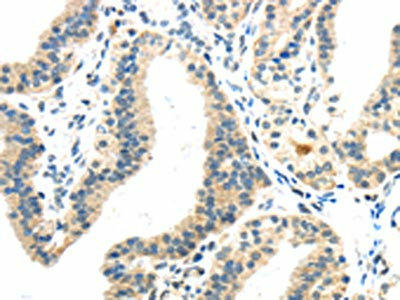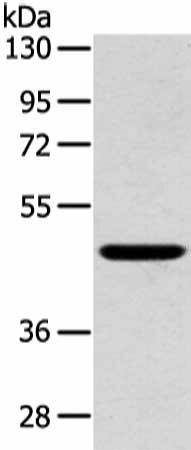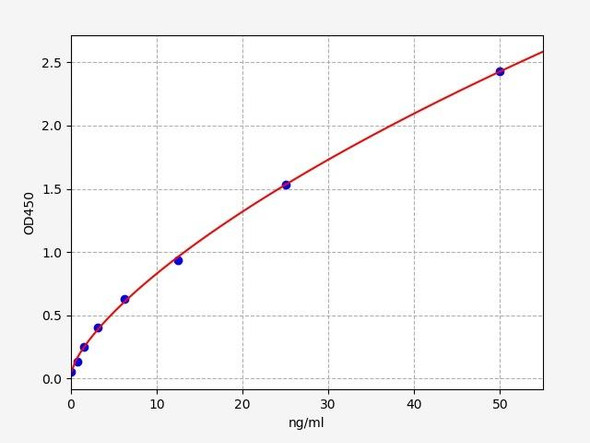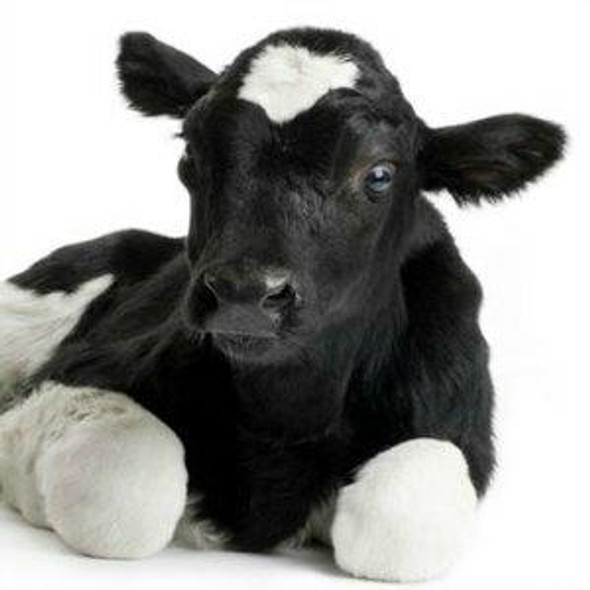| UniProt Protein Function: | INHBB: Inhibins and activins inhibit and activate, respectively, the secretion of follitropin by the pituitary gland. Inhibins/activins are involved in regulating a number of diverse functions such as hypothalamic and pituitary hormone secretion, gonadal hormone secretion, germ cell development and maturation, erythroid differentiation, insulin secretion, nerve cell survival, embryonic axial development or bone growth, depending on their subunit composition. Inhibins appear to oppose the functions of activins. Belongs to the TGF-beta family. |
| UniProt Protein Details: | Protein type:Secreted, signal peptide; Cytokine; Secreted; Cell development/differentiation Chromosomal Location of Human Ortholog: 2cen-q13 Cellular Component: extracellular region; extracellular space; perinuclear region of cytoplasm Molecular Function:cytokine activity; growth factor activity; hormone activity; host cell surface receptor binding; protein binding; protein homodimerization activity; transforming growth factor beta receptor binding Biological Process: activin receptor signaling pathway; cell development; cell differentiation; cellular response to insulin stimulus; cellular response to starvation; defense response; fat cell differentiation; growth; negative regulation of follicle-stimulating hormone secretion; negative regulation of hepatocyte growth factor biosynthetic process; negative regulation of insulin secretion; oocyte development; ovarian follicle development; positive regulation of follicle-stimulating hormone secretion; regulation of apoptosis; regulation of MAPKKK cascade; response to mechanical stimulus |
| NCBI Summary: | The inhibin beta B subunit joins the alpha subunit to form a pituitary FSH secretion inhibitor. Inhibin has been shown to regulate gonadal stromal cell proliferation negatively and to have tumour-suppressor activity. In addition, serum levels of inhibin have been shown to reflect the size of granulosa-cell tumors and can therefore be used as a marker for primary as well as recurrent disease. Because expression in gonadal and various extragonadal tissues may vary severalfold in a tissue-specific fashion, it is proposed that inhibin may be both a growth/differentiation factor and a hormone. Furthermore, the beta B subunit forms a homodimer, activin B, and also joins with the beta A subunit to form a heterodimer, activin AB, both of which stimulate FSH secretion. [provided by RefSeq, Jul 2008] |
| UniProt Code: | P09529 |
| NCBI GenInfo Identifier: | 1708437 |
| NCBI Gene ID: | 3625 |
| NCBI Accession: | P09529.2 |
| UniProt Secondary Accession: | P09529,Q53T31, Q8N1D3, |
| UniProt Related Accession: | P09529 |
| Molecular Weight: | 45,122 Da |
| NCBI Full Name: | Inhibin beta B chain |
| NCBI Synonym Full Names: | inhibin beta B |
| NCBI Official Symbol: | INHBB |
| NCBI Protein Information: | inhibin beta B chain |
| UniProt Protein Name: | Inhibin beta B chain |
| UniProt Synonym Protein Names: | Activin beta-B chain |
| Protein Family: | Inhibin |
| UniProt Gene Name: | INHBB |
| UniProt Entry Name: | INHBB_HUMAN |









